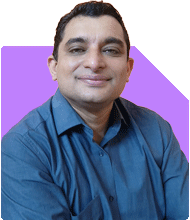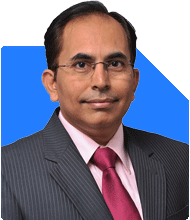Ramalingam Kalirajan |10902 Answers |Ask -Follow
Mutual Funds, Financial Planning Expert - Answered on May 09, 2024
He has an MBA in finance from the University of Madras and is a certified financial planner.
He is the director and chief financial planner at Holistic Investment, a Chennai-based firm that offers financial planning and wealth management advice.... more

Hello Dev, I am 32 years old and would like to start SIP for 5k per month to create retirement corpus of 1 crore. Also would like to generate 30 lacs in another 10 years for closing housing loan. Already have three MF SIP as below. Quant active fund 1000 Quant ELSS tax saver fund 500 ICICI prudential corporate bond fund 150 Kindly suggest in which MF should I invest further and also how much should I increase the SIP amount to achieve the above goals. Thank you.
Starting an SIP with 5k per month is a wise decision to create a retirement corpus of 1 crore. Additionally, generating 30 lakhs in 10 years to close your housing loan is a smart goal.
Considering your existing SIPs in Quant Active Fund, Quant ELSS Tax Saver Fund, and ICICI Prudential Corporate Bond Fund, you have a good foundation. However, to diversify your portfolio and align it with your goals, you may want to consider the following suggestions:
1. Equity-oriented funds with higher growth potential can help you achieve your long-term goals. Look into diversified equity funds or multi-cap funds for exposure to various segments of the market.
2. Since your investment horizon is long-term, you can afford to take slightly higher risks for potentially higher returns. Adding more equity-oriented funds can help you achieve this.
3. To generate the required amount for your housing loan closure in 10 years, you may need to increase your SIP amounts gradually. Consider reviewing your financial situation periodically and increasing your SIP contributions accordingly.
4. As a Certified Financial Planner, I recommend staying disciplined with your investments and adhering to your financial plan. Regularly review your portfolio's performance and make adjustments as needed to stay on track towards your goals.
By diversifying your portfolio and gradually increasing your SIP amounts, you can work towards achieving your financial objectives effectively.
Best Regards,
K. Ramalingam, MBA, CFP,
Chief Financial Planner,
www.holisticinvestment.in
You may like to see similar questions and answers below
Sunil Lala | Answer |Ask -Follow
Financial Planner - Answered on Mar 31, 2023
Ulhas Joshi |280 Answers |Ask -Follow
Mutual Fund Expert - Answered on Jul 05, 2023
Ramalingam Kalirajan |10902 Answers |Ask -Follow
Mutual Funds, Financial Planning Expert - Answered on May 18, 2024
Ramalingam Kalirajan |10902 Answers |Ask -Follow
Mutual Funds, Financial Planning Expert - Answered on Apr 08, 2024
Anu Krishna |1749 Answers |Ask -Follow
Relationships Expert, Mind Coach - Answered on Dec 17, 2025
Anu Krishna |1749 Answers |Ask -Follow
Relationships Expert, Mind Coach - Answered on Dec 17, 2025
Radheshyam Zanwar |6748 Answers |Ask -Follow
MHT-CET, IIT-JEE, NEET-UG Expert - Answered on Dec 17, 2025
Anu Krishna |1749 Answers |Ask -Follow
Relationships Expert, Mind Coach - Answered on Dec 17, 2025
Dr Shakeeb Ahmed Khan |184 Answers |Ask -Follow
Physiotherapist - Answered on Dec 17, 2025
T S Khurana |538 Answers |Ask -Follow
Tax Expert - Answered on Dec 17, 2025
T S Khurana |538 Answers |Ask -Follow
Tax Expert - Answered on Dec 17, 2025
Janak Patel |72 Answers |Ask -Follow
MF, PF Expert - Answered on Dec 17, 2025
Ramalingam Kalirajan |10902 Answers |Ask -Follow
Mutual Funds, Financial Planning Expert - Answered on Dec 17, 2025
Samraat Jadhav |2511 Answers |Ask -Follow
Stock Market Expert - Answered on Dec 17, 2025




























